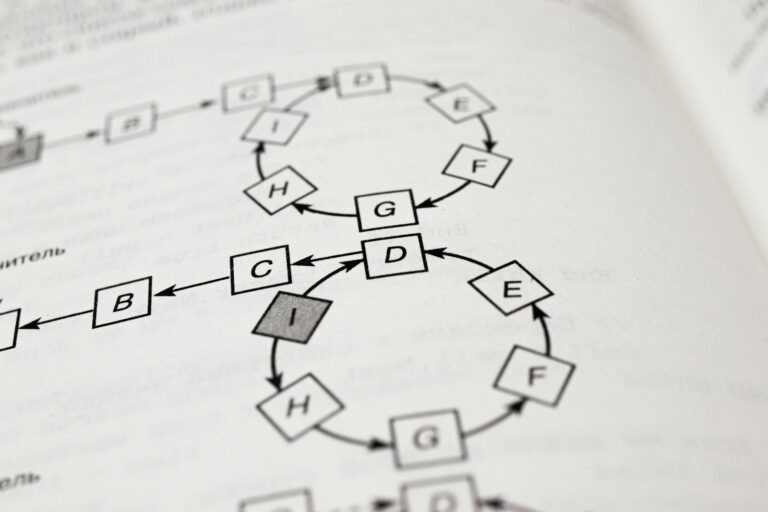In the field of computer science and engineering, data structures form the backbone of efficient algorithms and data management. One of the most widely used and important tree-based data structures, especially in databases and file systems, is the B+ Tree. As students of B.Tech Data Structures Notes 2025, understanding the B+ Tree is essential not just from an examination perspective, but also for practical implementation in real-world applications like relational databases and file indexing systems. This chapter from Unit 2 Notes Data Structures provides a detailed and structured explanation of the B+ Tree, its operations, structure, and applications, with a focus on academic depth and engineering study material style.
1. Introduction to B+ Tree
A B+ Tree is a type of self-balancing tree data structure that maintains sorted data in a way that allows for efficient insertion, deletion, and search operations. It is an extension of the B-Tree, optimized for systems that read and write large blocks of data. Unlike a binary search tree (BST), where each node has at most two children, a B+ Tree is a multi-way search tree where each node can have more than two children.
The main idea behind the B+ Tree is to keep the data sorted and organized in a manner that makes searching fast, especially on secondary storage devices like hard drives, where sequential access is more efficient than random access.
2. Key Features of B+ Tree
The B+ Tree has several distinctive features that set it apart from other tree structures:
- All values are stored at the leaf level of the tree.
- Internal nodes only store keys (used for navigation) and do not store actual data.
- Leaf nodes are linked using pointers, forming a linked list that allows for efficient range queries.
- The tree remains balanced, ensuring that the path from the root to any leaf is always the same length.
- Every node (except the root) must be at least half full, ensuring optimal space utilization.
These properties make the B+ Tree highly suitable for disk-based storage systems, which require minimizing the number of disk accesses.
3. Structure of B+ Tree
A B+ Tree of order m has the following properties:
- Each internal node can have at most m children and at least \u2308m/2\u2309 children.
- Each internal node contains at most m – 1 keys.
- All keys in an internal node act as separation values, which divide the tree into subtrees.
- All leaf nodes are present at the same level.
- Leaf nodes contain data pointers or actual values, and they are connected to each other in a linked list fashion.
📌 Insert Diagram: Structure of a B+ Tree showing internal and leaf nodes
4. Real-Life Example: ATM Transactions
Consider an ATM system where transaction logs need to be stored and accessed efficiently. Imagine storing millions of transactions, sorted by timestamp or transaction ID. If we use a regular binary search tree, retrieval time might increase with tree depth. But with a B+ Tree, since all data is in the leaf nodes and these are linked sequentially, range queries like “show last 10 transactions” become very efficient. The internal nodes only help in navigation, reducing the number of disk reads drastically.
This structure is why relational databases like MySQL, Oracle, and SQL Server use B+ Trees for their indexing mechanisms.
5. Operations on B+ Tree
5.1 Insertion
Insertion in a B+ Tree is done in such a way that it maintains the balanced nature of the tree. A new key is always inserted into the appropriate leaf node. If the leaf node overflows (i.e., exceeds the maximum allowed keys), it is split, and the middle key is promoted to the parent node.
Steps:
- Locate the appropriate leaf node.
- Insert the key in sorted order.
- If the node overflows, split it and push the middle key to the parent.
- Repeat splitting upwards if necessary.
📌 Insert Diagram: Insertion in B+ Tree with node split
5.2 Deletion
Deletion from a B+ Tree also maintains balance by possibly merging nodes or redistributing keys if a node becomes under-full.
Steps:
- Locate and delete the key from the leaf node.
- If underflow occurs, attempt redistribution from siblings.
- If redistribution is not possible, merge the node with a sibling.
- Update the parent accordingly.
📌 Insert Diagram: Deletion in B+ Tree with merge or redistribution
5.3 Search
Searching in a B+ Tree follows the same principle as a binary search but works over multiple keys in internal nodes.
Steps:
- Start at the root.
- Traverse internal nodes using key comparisons.
- Reach the leaf node where the data is stored.
Since the internal nodes contain only keys, and leaf nodes are linked, range queries like finding values between 100 and 500 become very efficient.
6. Differences Between B Tree and B+ Tree
| Feature | B Tree | B+ Tree |
|---|---|---|
| Data storage | Stored in both internal and leaf nodes | Only in leaf nodes |
| Searching | May end at internal node | Always reaches leaf node |
| Leaf node linkage | Not necessarily linked | Always linked |
| Range queries | Less efficient | Highly efficient |
| Traversal | Involves both node types | Only leaf level needed for full traversal |
7. Applications of B+ Tree
The B+ Tree is extensively used in real-world systems due to its efficient data retrieval and scalability. Major applications include:
- Database Indexing: Relational databases use B+ Trees to index data for faster retrieval.
- File Systems: Operating systems use B+ Trees to organize file directories (e.g., NTFS, HFS+).
- Key-Value Stores: Systems like RocksDB and LevelDB.
- Multilevel Indexing: Used where a primary index refers to a secondary index which is a B+ Tree.
🔹 Short Answer Questions (2-3 Marks)
- What is a B+ Tree?
A B+ Tree is a self-balancing tree data structure that stores all data in leaf nodes and uses internal nodes for indexing. - Why are B+ Trees better than binary search trees for databases?
Because they minimize disk I/O by storing data in leaf nodes and keeping internal nodes for navigation. - How does a B+ Tree handle overflow during insertion?
By splitting the node and promoting the middle key to the parent node. - What is the role of internal nodes in a B+ Tree?
They store keys for navigation and do not contain actual data. - What is the time complexity of searching in a B+ Tree?
O(log n), where n is the number of keys. - Are leaf nodes in B+ Trees always at the same level?
Yes, all leaf nodes in a B+ Tree are at the same level to ensure balance. - Can a B+ Tree be used for range queries?
Yes, and it is particularly efficient for such queries due to linked leaf nodes.
🔸 Long Answer Questions (5–10 Marks)
- Explain the insertion operation in a B+ Tree with an example.
Insertion involves locating the correct leaf node, inserting the key in order, and handling overflow by splitting. If splitting causes the parent to overflow, it is recursively split, promoting middle keys until balance is restored. This may change the root if needed. B+ Tree insertion ensures that the tree remains balanced and efficient for future operations. - Compare B Trees and B+ Trees in detail. Which one is more suitable for database indexing and why?
While B Trees allow data to reside in internal nodes, B+ Trees push all data to the leaf level and use internal nodes only for indexing. This separation improves I/O efficiency because data retrieval can be done by scanning sequentially through linked leaf nodes. B+ Trees are preferred in databases due to their better support for range queries and simpler, faster sequential access. - Describe the deletion process in B+ Tree with proper explanation.
Deletion begins at the leaf node. If removing a key causes the node to underflow, redistribution or merging with a sibling is attempted. The parent is then updated to reflect the changes. The process may propagate up to maintain balance. This approach avoids excessive restructuring, preserving the B+ Tree’s efficiency. - What are the advantages of B+ Trees over other tree structures for disk-based systems?
B+ Trees minimize disk I/O by keeping internal nodes small and only storing data in leaves. Their linked leaves support fast sequential access, ideal for range queries and large datasets. Their balanced structure ensures predictable performance.
📝 Chapter Summary
B+ Tree is a balanced m-ary tree where all data is stored in leaf nodes internal nodes contain only keys for navigation all leaf nodes are linked for efficient range queries the tree remains balanced after insertions and deletions it supports efficient search insert and delete operations commonly used in databases and file systems it improves disk access efficiency and supports multilevel indexing all paths from root to leaf are of the same length
📘 Model Paper / Sample Internal Exam Questions
- Define B+ Tree and explain its advantages over a B Tree.
- Describe the process of insertion in a B+ Tree with suitable example.
- Explain how B+ Trees are used in real-life applications such as ATM systems.
- Illustrate the difference between B Tree and B+ Tree in a tabular format.
- Write short notes on the applications of B+ Trees in database systems.



